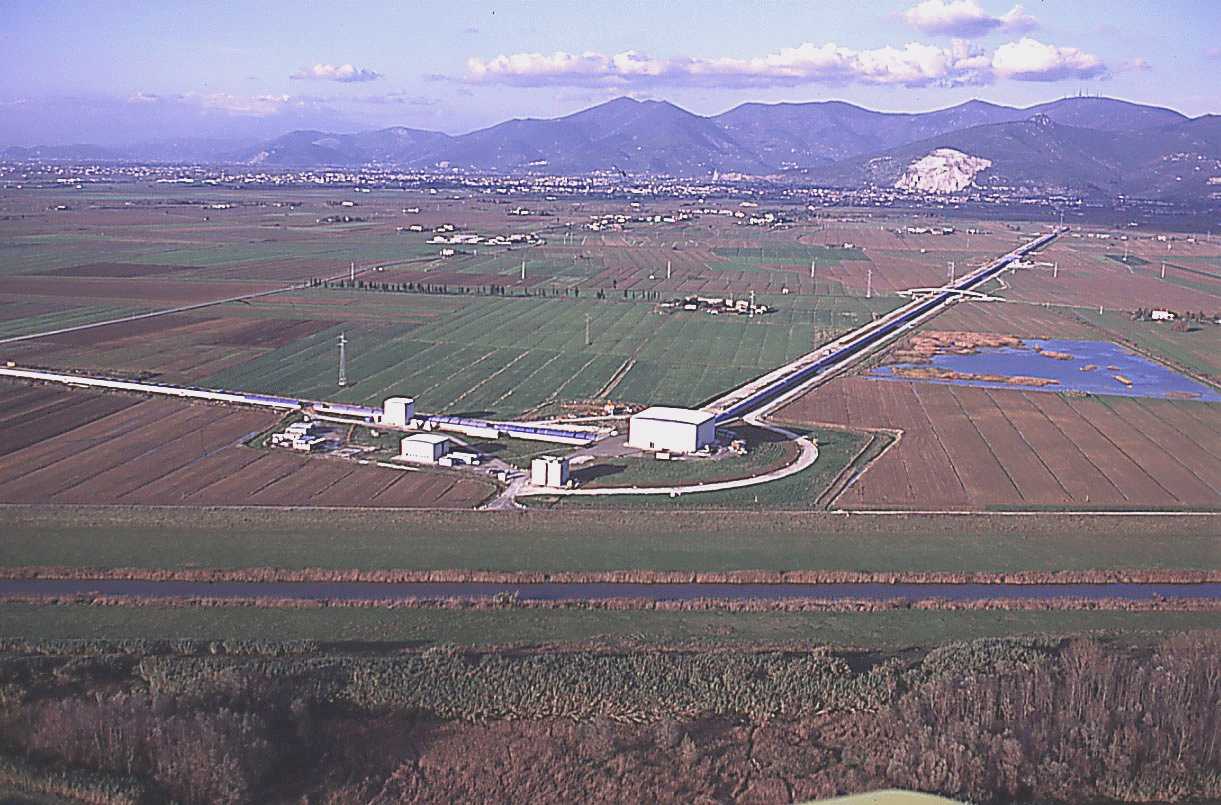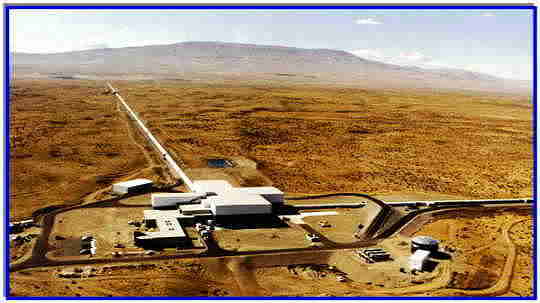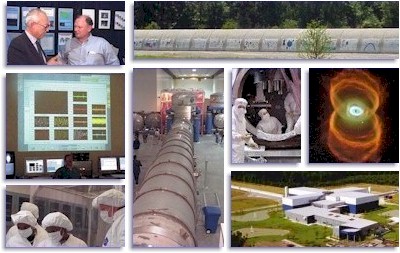 from the airplane as an example for the scale of such projects of the both mutually perpendicular arms, each 3 kilometers long of the laser interferometer, build in Cascina, Italy is shown on the left. The interferometer's arms represent tunnels, which of the example of the picture are with mean radius of 1,2 meters. A high vacuum in the tunnels to avoid the light Relley scattering from the molecules of the gaze is maintained. A picture of the LIGO-interferometer at Hanford
from the airplane as an example for the scale of such projects of the both mutually perpendicular arms, each 3 kilometers long of the laser interferometer, build in Cascina, Italy is shown on the left. The interferometer's arms represent tunnels, which of the example of the picture are with mean radius of 1,2 meters. A high vacuum in the tunnels to avoid the light Relley scattering from the molecules of the gaze is maintained. A picture of the LIGO-interferometer at Hanford with arm length of 4 kilometers is shown on the right. Other similar interferometer is build in Livingston and is predicted both to work synchronously to eliminate the different noise sources, as for example the accidentally local vibrations of the earth surface with seismic or another character. Special fundaments and ant-seismic techniques are applied in the places, where the sensitive elements of the multi-beam interferometer are set up. An art - photo
with arm length of 4 kilometers is shown on the right. Other similar interferometer is build in Livingston and is predicted both to work synchronously to eliminate the different noise sources, as for example the accidentally local vibrations of the earth surface with seismic or another character. Special fundaments and ant-seismic techniques are applied in the places, where the sensitive elements of the multi-beam interferometer are set up. An art - photo for the work and spirit in such scientific laboratory is shown at the next figure on the left.
for the work and spirit in such scientific laboratory is shown at the next figure on the left.The information about the universe is obtained mainly trough electromagnetic waves untill now . The detection of the gravitational waves will give the humanity totally new and universal tool for the investigation of the universe and its evolution. The setting of such high purpose today is a natural result of the progress of the applied physics and especially from the possibility of measuring of very small periodical displacements – a million times smaller then the dimension of the building particles of the atoms. At the other hand this put another fundamental question as well – about the structure of the micro-space.
The three my publications, listed below demonstrate experimentally the possibilities of measuring very small periodical displacements with laser interferometer. In the first paper at 1974 for the first time from me is discussed the possibility for using the laser interferometer for detection of gravitational waves and in the last - are analyzing details and experimentally is proved such possibility.